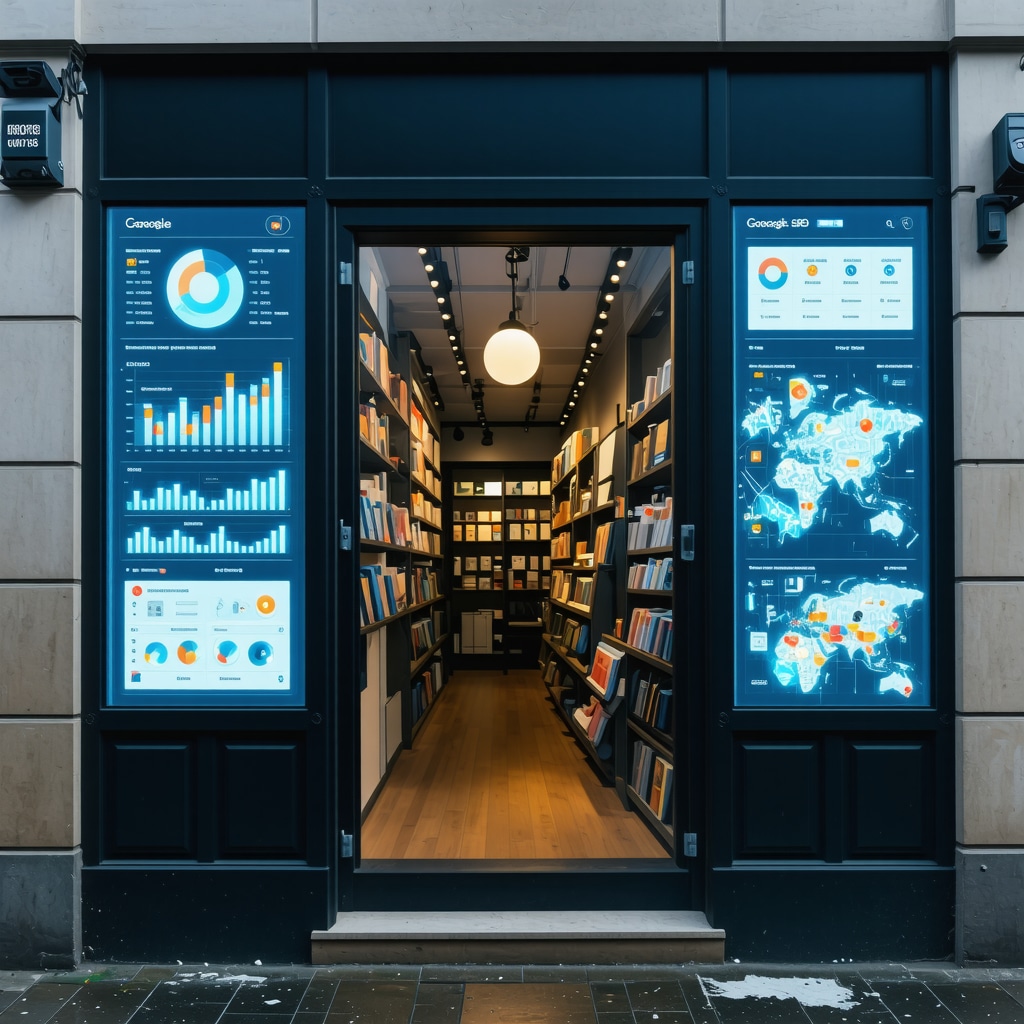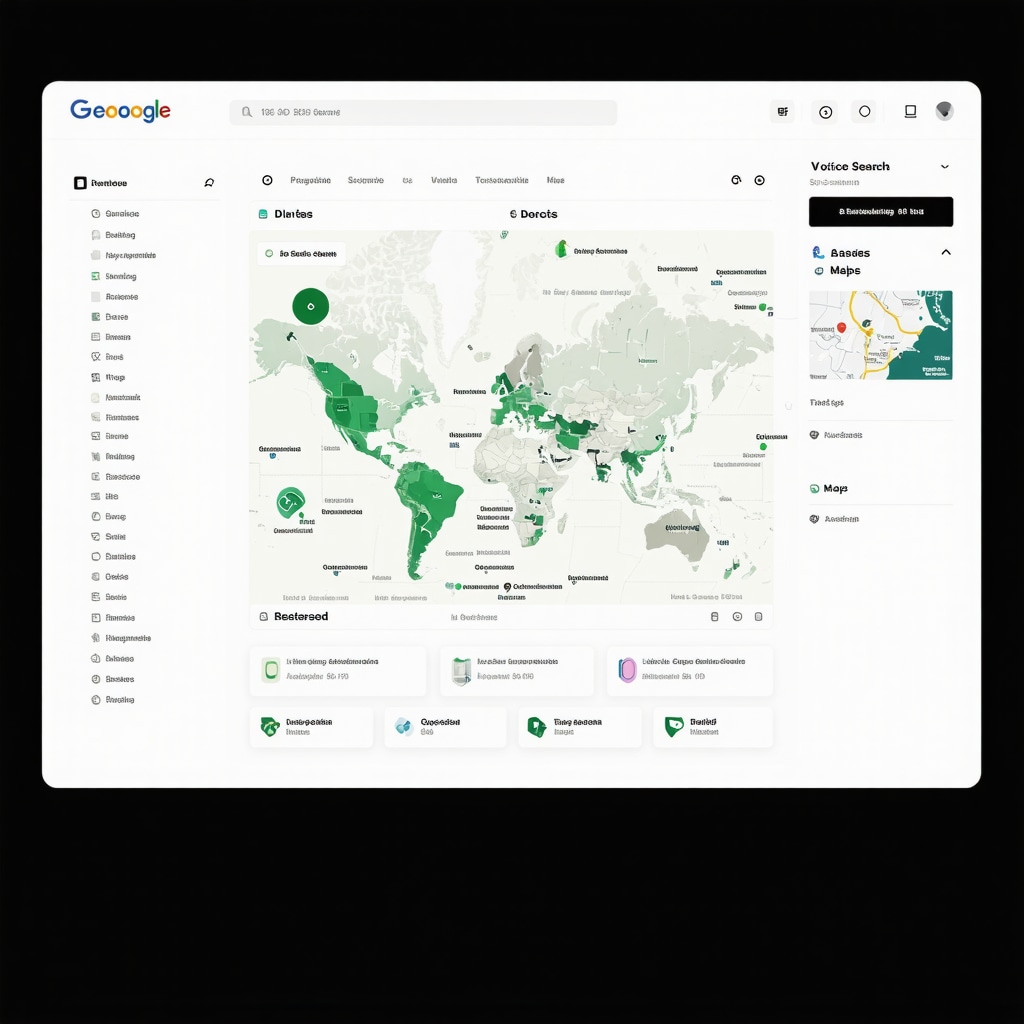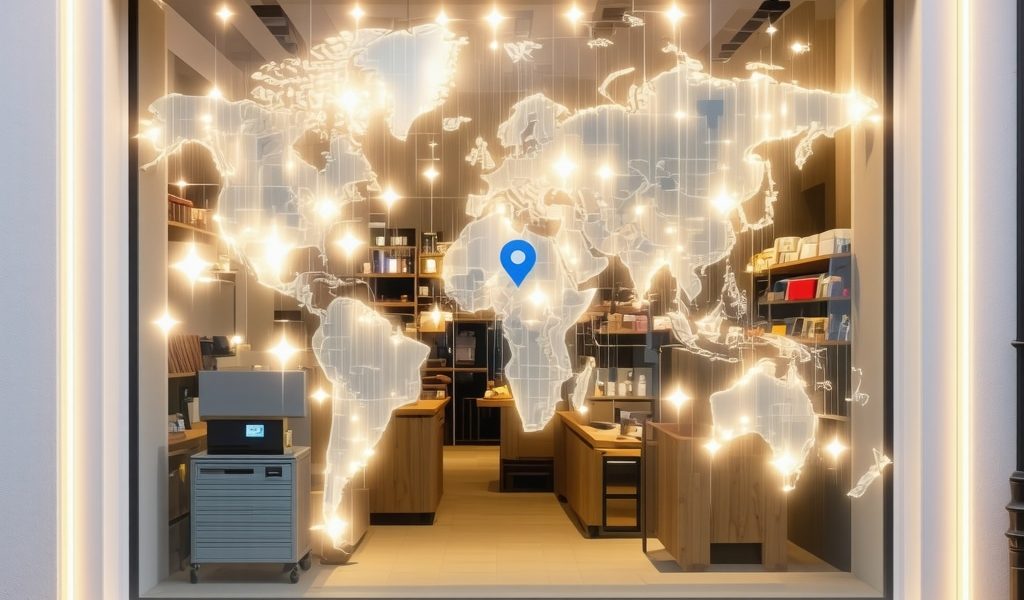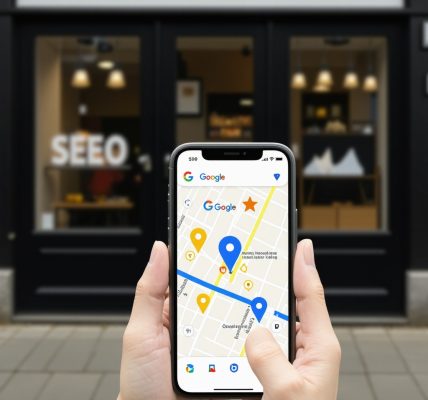Unlocking the Hidden Potential of Your Google Maps Presence
In today’s hyper-competitive local markets, merely existing on Google Maps isn’t enough. Capturing local leads demands a strategic orchestration of your Google Business Profile and map presence that goes beyond basic listing. This article dives deep into proven methods that have consistently elevated local businesses to the top of Google Maps results, driving meaningful foot traffic and qualified inquiries.
Crafting a Magnetic Google Business Profile That Converts
The foundation of a robust Google Maps presence starts with an optimized Google Business Profile (GBP). But optimization isn’t just about filling in blanks — it’s an art and science of strategic keyword integration, comprehensive business information, and engaging multimedia. Incorporate keywords naturally within your business description and services to enhance relevance. Ensuring your Name, Address, and Phone number (NAP) consistency across the web builds local authority and trust, a critical factor Google uses to rank listings.
Case in point: A local bakery in Austin, TX, increased its Google Maps-driven foot traffic by 35% within three months after updating its GBP description with targeted local keywords and consistently managing NAP citations across directories. This real-world example underscores how precision in profile details can elevate local discovery.
Visual Storytelling: How Photo Optimization Boosts Local Engagement
Visual content on your Google Maps listing — from photos of your storefront to products and team — dramatically influences click-through and engagement rates. Not only should photos be high-quality and regularly updated, but they must also be optimized with descriptive filenames and alt text containing relevant local keywords. This optimization signals to Google’s algorithm the relevance and freshness of your listing, which can improve local rankings.
How Often Should You Update Your Google Maps Listing to Maximize Leads?
Consistent updates to your Google Business Profile, including new photos, posts, and review responses, act as positive signals to Google’s local ranking factors. Best practices suggest weekly to bi-weekly updates to maintain visibility and relevance. An active profile not only attracts more views but also builds trust with potential customers by showing your business is dynamic and responsive.
Leveraging Reviews and Citations: The Trust Currency of Local SEO
Customer reviews are arguably the most influential trust signals on Google Maps. Encouraging satisfied customers to leave detailed reviews and promptly responding to them — both positive and negative — can significantly enhance your local presence. Moreover, maintaining consistent citations across authoritative local directories supports your GBP’s credibility, further boosting ranking potential.
For a deeper dive into managing citations effectively, consider exploring expert guides on GMB citation management and NAP consistency strategies.
Strategic Internal Linking to Amplify Your Local SEO Impact
Integrating authoritative internal links within your Google Business Profile description and posts can guide search engines and users to additional valuable content, enhancing your listing’s authority. For instance, linking to detailed resources like how to optimize Google Maps presence or proven local SEO techniques can elevate your profile’s informational depth and user value.
Authoritative Insights: Why Google’s Local Search Ecosystem Rewards Authenticity
According to a 2023 report by Moz on Local SEO Ranking Factors, Google increasingly prioritizes user engagement metrics and business authenticity over mere keyword stuffing or backlink quantity. This evolution means that businesses genuinely engaging with their community through reviews, posts, and accurate information will see lasting improvements in their Google Maps presence. Read the full Moz Local SEO Ranking Factors Report for detailed insights.
Engage With Us: Share Your Success Stories or Questions
Have you experimented with any of these proven strategies to boost your Google Maps presence? Share your experiences or ask questions in the comments below to join a community dedicated to mastering local lead generation through Google Maps. For personalized assistance, visit our contact page to connect with local SEO experts ready to help you dominate your local market.
How I Learned the Power of Consistent NAP Across Multiple Platforms
Early in my local SEO journey, I underestimated the impact of NAP (Name, Address, Phone number) consistency. I thought it was enough to update my Google Business Profile once and leave it at that. However, I quickly realized that inconsistency across directories confused Google and hurt my rankings. By systematically auditing and correcting my business information on every relevant platform, including local directories and niche sites, I saw a tangible uplift in my map rankings.
This experience taught me that maintaining NAP consistency is an ongoing process, not a one-time task. Tools such as Moz Local or BrightLocal can be incredibly helpful for this purpose, but manual checks are just as vital to catch discrepancies that automated tools might miss.
Beyond the Basics: Leveraging Posts and Offers on Your Google Business Profile
One of the game-changing strategies I adopted was regularly posting updates, offers, and events directly on my Google Business Profile. These posts act like mini-ads that appear in your listing and can entice people to engage or visit your business. For example, announcing a limited-time discount or a new product launch through GBP posts not only keeps your profile fresh but also signals to Google that your business is active and relevant.
From personal experience, I noticed that when I started posting weekly updates, my profile’s engagement rates improved significantly. It’s a simple way to connect with potential customers and highlight what makes your business unique.
Are You Using Google Business Profile Posts to Their Full Potential?
Many business owners ask me if posting regularly on their GBP really makes a difference. Based on my experience and supported by insights from Moz’s Local SEO Ranking Factors Report, the answer is a resounding yes. Google rewards active profiles that provide fresh content and engage users. It’s not just about SEO; it’s about building trust and rapport with your community.
The Role of Structured Data and Backlinks in Local SEO
While optimizing your Google Business Profile is crucial, don’t overlook the power of structured data on your website and quality backlinks from local partners. Structured data markup helps search engines better understand your business details, which can enhance your visibility in local search results and maps. Meanwhile, backlinks from reputable local organizations or industry sites reinforce your authority and trustworthiness.
In my own projects, integrating schema markup and pursuing local backlink opportunities have been key to climbing the ranks competitively. For those wanting a deep dive, resources like effective GMB backlink building strategies provide actionable advice.
Sharing Your Journey: What Has Worked for Your Local SEO?
Now I’m curious: What strategies have you implemented in your Google Business Profile or local SEO efforts? Have you noticed a particular tactic that brought in more customers or improved your Google Maps ranking? Feel free to share your experiences or questions in the comments below — let’s learn and grow together in this dynamic space.
If you want to explore more advanced techniques or need help optimizing your profile, check out our extensive guides on mastering Google Business SEO and weekly GMB listing optimization.
Decoding Behavioral Signals: How User Interactions Influence Google Maps Rankings
While traditional SEO elements like NAP consistency and keyword optimization form the backbone of local rankings, Google’s algorithm increasingly values behavioral signals — the real-world interactions users have with your Google Maps listing. These include click-through rates, direction requests, calls from the profile, and even the time spent viewing your listing. This data provides Google with direct indicators of your business’s relevance and popularity in the local context.
For example, a business that consistently receives clicks on its phone number or requests for directions signals to Google that it is actively engaged with the local community and meeting user needs effectively. Therefore, enhancing user experience on your listing — through clear CTAs, updated posts, and engaging multimedia — can indirectly boost your map rankings.
What Advanced Strategies Can Amplify Behavioral Signals to Elevate Google Maps Ranking?
Optimizing for behavioral signals requires a multi-faceted approach: integrating appointment booking features, enabling messaging, and maintaining prompt responses to user inquiries. Additionally, leveraging promotional posts that encourage users to interact — such as exclusive event announcements or limited-time offers — can significantly increase engagement metrics.
Another sophisticated tactic is to analyze the analytics data from Google Business Profile Insights regularly. Monitoring which actions users take most frequently allows you to tailor your content and offerings to what drives the highest engagement, thereby reinforcing positive behavioral signals.
According to Search Engine Land’s comprehensive analysis of Google Business Profile Insights, businesses that actively use these data-driven adjustments enjoy up to a 25% uplift in local search visibility.
Artificial Intelligence Meets Local SEO: Crafting Dynamic and Personalized User Experiences on Google Maps
The rise of AI-powered tools is revolutionizing how local businesses optimize their Google Maps presence. AI can help generate tailored Google Business Profile descriptions, automate responses to reviews with a human touch, and even suggest optimal posting schedules based on user engagement patterns. This level of automation not only saves time but also ensures your listing remains fresh and highly relevant.
For instance, deploying natural language processing (NLP) algorithms to analyze customer reviews can surface common themes and sentiments, which you can then highlight in your profile description or service offerings to address real customer needs.
Moreover, AI-driven chatbots integrated through Google’s messaging feature can provide instantaneous responses to potential customers, improving conversion rates and user satisfaction. These bots can be programmed to handle complex queries, direct users to specific service pages, or even schedule appointments seamlessly.
How Can AI Integration Transform Your Google Business Profile Management?
Integrating AI tools into your local SEO strategy transforms your Google Business Profile from a static listing into a dynamic, interactive experience. This approach not only enhances user engagement but also aligns perfectly with Google’s emphasis on meaningful, authentic interactions.
Case studies indicate that businesses leveraging AI for their GBP management witness improved review sentiment, faster response times, and higher click-to-call ratios — all contributing to improved rankings and increased local lead generation.
Harnessing the Power of Hyperlocal Content for Niche Market Domination
Beyond broad local SEO strategies, crafting hyperlocal content that resonates with your immediate community can set your business apart. This involves creating Google Posts or linked blog content that references local events, landmarks, or community initiatives. Such content appeals directly to your target audience’s identity and search intent, boosting both relevance and engagement.
For example, a landscaping business might publish posts about seasonal gardening tips specific to its city or sponsor local charity events featured in its Google Posts. These efforts build a narrative of community involvement, which Google’s algorithm increasingly rewards.
Interested in diving deeper? Our guide on Hyperlocal Content Strategies for Google Maps Success explores actionable tactics to leverage community-centric content for superior local SEO results.
Engage Deeper: How Are You Leveraging Next-Gen Technologies and Behavioral Insights in Your Google Maps Strategy?
Have you experimented with AI tools or behavioral data analytics to sharpen your Google Maps presence? What successes or challenges have you encountered? Share your journey in the comments below and join a network of forward-thinking local businesses embracing innovation for market dominance.
For personalized assistance in integrating these advanced strategies, connect with our local SEO experts who specialize in cutting-edge Google Maps optimization techniques.

Elevating Your Google Maps Strategy with Predictive Analytics
As local search evolves, predictive analytics emerges as a formidable tool to anticipate consumer behavior and tailor your Google Business Profile accordingly. By analyzing historical user interactions, search trends, and demographic data, businesses can forecast peak engagement periods and customize content releases or promotional offers to capture maximum attention.
This forward-looking approach moves beyond reactive optimization, embracing a proactive stance that aligns perfectly with Google’s preference for timely and relevant content. Implementing predictive analytics not only enhances user experience but strategically positions your listing ahead of competitors.
How Can Predictive Analytics Be Integrated Seamlessly into Your Local SEO Workflow?
Integrating predictive analytics begins with leveraging platforms that consolidate Google Business Profile Insights, local search trends, and customer engagement metrics. Tools such as Google Analytics 4 combined with AI-driven local SEO platforms enable real-time data synthesis to inform content scheduling, review solicitation timing, and targeted advertising efforts.
Moreover, aligning these insights with your business’s operational calendar ensures that promotional campaigns and updates resonate authentically with community rhythms. As highlighted in the Search Engine Journal’s expert guide on predictive analytics for local SEO, businesses adopting these methodologies report enhanced conversion rates and a more engaged local audience.
Optimizing for Voice Search: The Next Frontier in Local Discovery
With voice-activated devices becoming ubiquitous, optimizing your Google Business Profile and website content for voice queries is imperative. Voice search queries tend to be more conversational and question-based, necessitating a focus on natural language and featured snippet optimization.
Incorporate long-tail, question-style keywords within your profile descriptions and posts to capture voice search traffic effectively. Additionally, ensuring your business information is concise and structured facilitates quick responses by virtual assistants, improving the likelihood of being the chosen result.
Advanced Reputation Management: Leveraging Sentiment Analysis for Strategic Responses
Beyond merely responding to reviews, employing sentiment analysis tools allows businesses to discern underlying customer emotions and trends. This intelligence enables crafting nuanced responses that address specific concerns, reinforce positive experiences, and demonstrate genuine engagement.
Such strategic interaction not only nurtures customer loyalty but also signals to Google your attentiveness and commitment to service quality, factors increasingly weighted in local ranking algorithms.
Harnessing Geofencing for Hyper-Targeted Google Maps Engagement
Geofencing technology creates virtual boundaries around specific geographic areas, triggering tailored advertisements or notifications when potential customers enter these zones. Integrating geofencing with your Google Business Profile campaigns enables hyper-targeted promotions that can drive immediate foot traffic and boost local visibility.
For instance, a coffee shop might deploy a limited-time discount notification to users who enter nearby office complexes during morning hours, effectively capturing the commuter market.
Engage With Us: Elevate Your Local SEO with Cutting-Edge Strategies
Are you ready to transform your Google Maps presence using AI, predictive analytics, and behavioral insights? Share your advanced implementation experiences or pose your toughest questions in the comments below. For tailored guidance on integrating these sophisticated tactics, visit our contact page and collaborate with experts dedicated to propelling your local business to the forefront of Google Maps search results.

Frequently Asked Questions (FAQ)
What is the most critical factor to optimize in my Google Business Profile for better local rankings?
The most critical factor is ensuring your Google Business Profile (GBP) has complete, accurate, and consistent information, including Name, Address, and Phone number (NAP) across all platforms. Strategic keyword integration within your business description and services further enhances relevance. High-quality photos and active engagement through posts and reviews also play vital roles in signaling authority and authenticity to Google.
How often should I update my Google Maps listing to maintain or improve visibility?
Regular updates are essential. Ideally, you should refresh your GBP weekly or bi-weekly by adding new photos, posting updates or offers, and responding promptly to reviews. This consistent activity signals to Google that your business is active and relevant, improving your chances of higher local rankings.
Can AI tools really improve my Google Maps presence, and how?
Yes, AI tools can significantly enhance your Google Maps presence by automating responses to reviews with a personalized tone, generating optimized business descriptions, and suggesting ideal posting times based on user engagement data. AI-powered chatbots integrated with Google messaging can improve customer interaction and conversion rates by providing instant, accurate information.
How do behavioral signals influence Google Maps rankings?
Behavioral signals such as clicks on your phone number, direction requests, and time spent viewing your listing reflect user engagement and relevance. Google uses these metrics to assess how well your business meets local searchers’ needs. Enhancing user experience with clear calls to action, updated posts, and engaging multimedia can amplify these behavioral signals and boost your ranking.
What role do reviews and citations play in local SEO?
Reviews are paramount trust signals; detailed, positive reviews improve your credibility and ranking. Promptly responding to all reviews demonstrates engagement and customer care. Citations—consistent mentions of your NAP across authoritative local directories—build your business’s credibility and local authority, crucial for higher Google Maps visibility.
How can predictive analytics be applied to Google Maps optimization?
Predictive analytics uses historical user data and local search trends to forecast peak engagement times and tailor your content release schedules accordingly. This proactive strategy helps you publish timely posts and promotions that resonate with your audience’s behavior patterns, aligning with Google’s preference for relevant, fresh content to improve local rankings.
Is voice search optimization necessary for Google Maps, and how do I approach it?
With the rise of voice-activated devices, optimizing for voice search is increasingly important. Focus on incorporating conversational, question-based long-tail keywords in your GBP descriptions and posts. Ensure your business information is clear and concise to facilitate quick, accurate responses by virtual assistants, increasing the likelihood of being the top voice search result.
What advanced tactics can boost user engagement on my Google Business Profile?
Advanced tactics include integrating appointment booking features, enabling messaging, leveraging geofencing to target nearby potential customers, and using sentiment analysis tools to tailor review responses. Also, regularly analyzing Google Business Profile Insights to adapt your strategy based on user interaction patterns can significantly elevate engagement metrics.
How important is NAP consistency, and how do I maintain it?
NAP consistency is foundational for local SEO success. Inconsistent business information across directories confuses search engines and diminishes ranking potential. Regularly audit and update your NAP on all relevant platforms manually or with tools like Moz Local or BrightLocal, ensuring uniformity and accuracy to build trust with Google.
Can hyperlocal content impact my Google Maps ranking?
Absolutely. Creating hyperlocal content that references local events, landmarks, or community initiatives strengthens your business’s connection with the immediate community. This localized relevance is rewarded by Google’s algorithm, enhancing your profile’s visibility to nearby searchers and fostering deeper engagement.
Trusted External Sources
- Moz Local SEO Ranking Factors Report: Provides in-depth analysis of local SEO ranking elements, including user engagement and authenticity, informing strategic optimizations for Google Maps.
- Search Engine Journal – Predictive Analytics for Local SEO: Offers expert guidance on integrating predictive analytics into local SEO workflows to anticipate consumer behavior and tailor content effectively.
- Search Engine Land – Google Business Profile Insights Explained: Breaks down how to interpret and leverage Google Business Profile analytics data to refine engagement strategies and improve local search visibility.
- BrightLocal Local Search Industry Survey: Delivers comprehensive data on trends and best practices in local SEO, including citation management, review strategies, and behavioral signals.
- Google’s Official Business Profile Help Center: The authoritative source for technical guidelines, feature updates, and best practices directly from Google for managing and optimizing your Business Profile.
Conclusion
Optimizing your Google Maps presence requires a multifaceted, expert-driven approach that goes far beyond basic listing setup. From ensuring meticulous NAP consistency and leveraging high-quality visuals to embracing AI-powered tools and predictive analytics, each strategy contributes to building a robust, authentic, and engaging local profile. Behavioral signals and hyperlocal content further amplify your visibility by aligning your business with real user intent and community identity.
By integrating these advanced tactics, you position your business not just to appear on Google Maps but to dominate local search results and attract qualified leads consistently. Start applying these insights today, and join the conversation by sharing your experiences or questions. Explore our related expert content for deeper mastery and connect with local SEO professionals ready to elevate your Google Business Profile to new heights.



This article hit home for me, especially the part about optimizing visuals and leveraging structured data. When I first started working on our Google Maps presence, I underestimated how much impact those high-quality photos and schema markup could make. Since implementing a consistent photo update schedule and schema across our website and GBP, we’ve noticed a noticeable uptick in local inquiries and profile engagement. It reinforces how small, consistent efforts can truly build a more authoritative and engaging local profile.
One challenge I faced was maintaining NAP consistency across dozens of local directories, which felt overwhelming at first. Automating with tools like BrightLocal helped, but manual audits are still necessary to catch discrepancies. In your experience, what’s the best frequency to audit these citations to stay ahead?
Also, I’d love to hear if anyone has experimented with hyperlocal content campaigns—any tips on creating content that truly resonates with community interests and boosts ranking?
I really appreciate this comprehensive overview of enhancing Google Maps visibility. One area I’ve been exploring lately is the impact of hyperlocal content, especially aligning posts and updates with current local events and community initiatives. I’ve found that sharing stories or participating in local charity events through Google Posts can significantly enhance community engagement and trust, which Google seems to reward with better visibility. Has anyone here had success with creating hyperlocal content that not only drives rankings but also fosters genuine community loyalty?
Also, I agree with the importance of NAP consistency; I’ve been using BrightLocal for regular audits, which helps keep discrepancies at bay. For those who manage multiple directories, how often do you find it necessary to re-audit to stay on top of changes? I’ve been doing it quarterly, but I wonder if more frequent checks could deliver quicker results. Overall, this post reinforces that consistent, strategic efforts across visuals, reviews, and content are key to long-term success in local SEO.